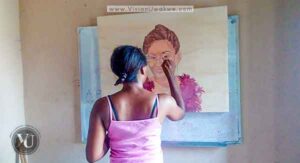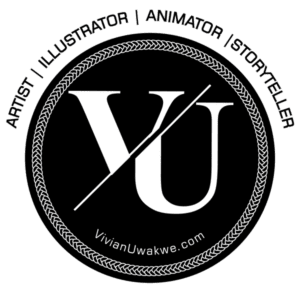There are growing numbers of people wanting to pursue an art career by teaching themselves rather than going through a formal art school. Having had first-hand experience, I believe I am qualified to contribute a thing or two about how to become a self-taught artist.
It is becoming increasingly popular for many people desiring to become artists who want to follow the teach-yourself route. In the art world, the internet has offered billions of people around the world the opportunity to learn online from the most experienced artists regardless of one’s location.

I took advantage of this when I started my own art journey and still do today because learning is a never-ending journey. Self-taught artists like me have the advantage of not being limited by the constraints of traditional art education. This allows them to develop their own unique style and approach to creating art.
The most challenging thing about the self-taught option for artists is knowing where to start and how to improve without the guidance of a teacher. Here are some tips for those reading this and want to become self-taught artists:
Identify Your Interests And Be Clear About Your Reasons

What prompted your decision to become a visual artist? What kind of art would you like to make? Is it something you have seen others making or it is a kind of art you have a flair for? Is there a particular art medium you are drawn to like watercolours, coloured pencils, clay or straw for basket weaving? Are you planning to create art for personal enjoyment, to share with others, or to make a living from it?
Answering these questions in an honest manner will help you draw the fasts possible roadmap to start your journey of becoming a self-taught artist and improving your own learning curriculum along the way. A caveat, there are some of these questions that you will not have an answer for and that is fine. The answers will come later. Just focus on the ones you have answers for and use them as a guide at the start of your journey.
When I embarked on my self-taught journey, I wanted a career change in something I enjoyed doing. I had a flair for painting and loved working in watercolour and gouache. From day one, I very well intended to make a full-time income living on my artistry. I didn’t know how powerful these clear intentions were in guiding me in selecting my learning options. This is why I recommend you also answer these questions.
In real life, art schools have a curriculum as well as a duration of the study. When you embark on your own self-taught journey, you would want to quickly identify what you need to study and master them quickly. Knowing what you want to achieve as an artist will help you focus your efforts and develop your skills in a meaningful way.
Learn The Fundamentals Of Art And Develop Your Own Curriculum
Creating structure is extremely important in learning. Because you are a self-taught artist, without the privilege of a formal learning environment, you most likely will not have a clue about where you are going.
In the initial part of my journey, learning was largely spontaneous. I used YouTube a lot (and still do) so I pretty much clicked away at any artist video and subscribed to any art channel that caught my attention. When I started specialising, and my art vocabulary improved to where I understood how to identify as well as express my professional needs better, I started structuring my learning needs a bit better.
You need to know as early as possible, what you need to focus on and get into the thick of it. One particular free resource I find extremely helpful for this is studying ArtProf.org’s tutorials on Art Fundamentals: https://artprof.org/library/learn/fundamentals/ as well as ArtProf.org’s well-organised curriculum: https://artprof.org/library/learn/curriculums/. Their resources cut your time scavenging for what to learn down to a tenth, eliminate chaos and introduce the order you need to build your artistic study curriculum.
I wish I had seen a site like this earlier on. It would have saved me a lot of time searching for what to focus on and getting my career started early. I particularly like that the fundamentals are generalised whilst the curriculum is tailored towards the speciality you might want to embrace.
Practice Practice Practice
Art is one of the topmost professions that requires practice. There is no way around it. An artist must produce work regularly and it starts when they begin to study well into their professional days.
Being self-taught affords you the opportunity to spread out your studies in a flexible manner that is suited to you. You will however need to put in the work required to achieve your goals. The intensity and practice time you allot to practising will depend on whether you want to be a hobbyist or a professional artist.
Daily practice is recommended for artists. Many professional artists have huge collections of sketchbooks documenting the progression of their artistic skills over the years. If you put peanuts, you will get monkeys.
Because I wanted to be a professional artist, I dedicated every single spare time I had to my study and practice. You can submit works to online forums for critique and you will get loads for free.
Open Your Artwork To Criticism
Criticism is as old as art itself and you cannot escape it even if you are a self-taught artist that isn’t learning in a formal setting. Opening your art to criticism will be highly beneficial because it will help you understand how your work is being perceived and received by others and exposes areas you need to grow and improve.
Receiving criticism as a self-taught artist can be particularly difficult because you work largely in isolation. For artists who go through a formal learning route, taking art critique is like water off a duck’s back because art critique is ingrained into their learning process very early on. As a self-taught artist, learn to handle criticism, become more resilient and be better able to cope with rejection and negative feedback.
Nothing else exposes weaknesses in your work more than criticism because it creates the opportunity for you to learn from the perspectives of others. It will help you enhance your craft. By considering and incorporating constructive criticism, artists can improve their skills and techniques, leading to better and more successful work.
Visit Galleries, Art Villages And Museums
While it is possible to view art online, there is no substitute for seeing it live in person. By visiting museums and galleries, self-taught artists can experience art firsthand and get a deeper appreciation for it. I once abandoned art for about three years but after an artist friend, somewhat demanded I step into the Nike Art Gallery in Lagos, Nigeria I was prompted back into setting up my easel and creating art after a long hiatus.
Museums and galleries are great places to learn about the history of art and how it has evolved over time. By visiting these institutions, self-taught artists can gain a greater understanding of the context in which their own art fits.
They display the work of both established and emerging talents so they help self-taught artists see how other artists approach their craft and find inspiration for their own work.
Many museums and galleries offer educational programs and workshops for artists. They also have information about where artists can get access to training or workshops run by other organisations. By participating in these programs, self-taught artists can get feedback on their work from experienced art professionals.
They often host events and exhibitions that bring together artists from different backgrounds. By attending these events, self-taught artists can connect with other artists and build relationships that can be beneficial to their careers.
Join Artist Groups Online And Offline
You are going to need to network with other artists and you will particularly find building networks with artists within your niche more rewarding. To put it in a better perspective, if you are an illustrator, joining an illustrator group will benefit you more than a group catering to artists with diverse specialities.
There are artist groups online and they are very easy to find by searching social media platforms like Facebook or forums like sites like Reddit. Do not limit yourself to online networks. Nothing can replace real-life human connections. Make effort to find local artist groups and meet up with other artists who live in your area.
Search for hangouts and events where artists gather. It might be regular meetings or one-off events that occur once or several times a year. Some of these events might be free or paid. Even art groups/associations might require a formal application, as well as yearly membership fees and others, which are completely free. Observe them, ask questions about their reputation and impact on the art community, participate in one of their gatherings then decide if it is worth joining. Make yourself available in person and interact with real-life artists.
Artist groups provide an opportunity to connect with other artists and creatives in your field. They can be helpful for finding collaborators, learning about job opportunities, and getting feedback on your work. Being an artist can be a solitary pursuit, and artist groups can provide a sense of community and support. Members can share ideas, offer encouragement, and provide constructive criticism.
Many artist groups offer workshops, seminars, and other professional development opportunities to help members improve their skills and advance their careers. Artist groups may host exhibitions or other events that provide a platform for members to showcase their work and reach a wider audience.
Collaborations between members, can lead to new creative opportunities and help you expand your artistic horizons.
Keep The Wheels Turning
One thing that became quite apparent to me over time is that learning never ends for a true artist. Never believe that you will ever be exempt from learning because you “have arrived’’.
Formally taught artists may have the advantage of school and “graduate” after a stipulated learning period. As a self-taught artist, even when you start enjoying patronage and getting huge commissions as well as collectors, you never really graduate from learning. The reason is that because you took upon the responsibility for training yourself, you subconsciously developed the muscle for learning and unlocked a thirst for betterment that won’t go away very quickly if ever.
Use your newfound discipline for self-learning to keep improving the quality of your work. Quality attracts quality. When you invest in your art skill, you step up from $100 commissions to $1,000 commissions and $10,000 commissions. Huge brands will want to collaborate with you because you become more valuable.
Conclusion
Be persistent and don’t give up. Choosing the self-taught route and opting to learn on your own to be an artist can be challenging, and it may take time to see progress and improvement. It’s important to stay focused and dedicated to your craft, even when it feels difficult or frustrating. Remember that every artist has to start somewhere, and with hard work and determination, you can become a successful self-taught artist.



